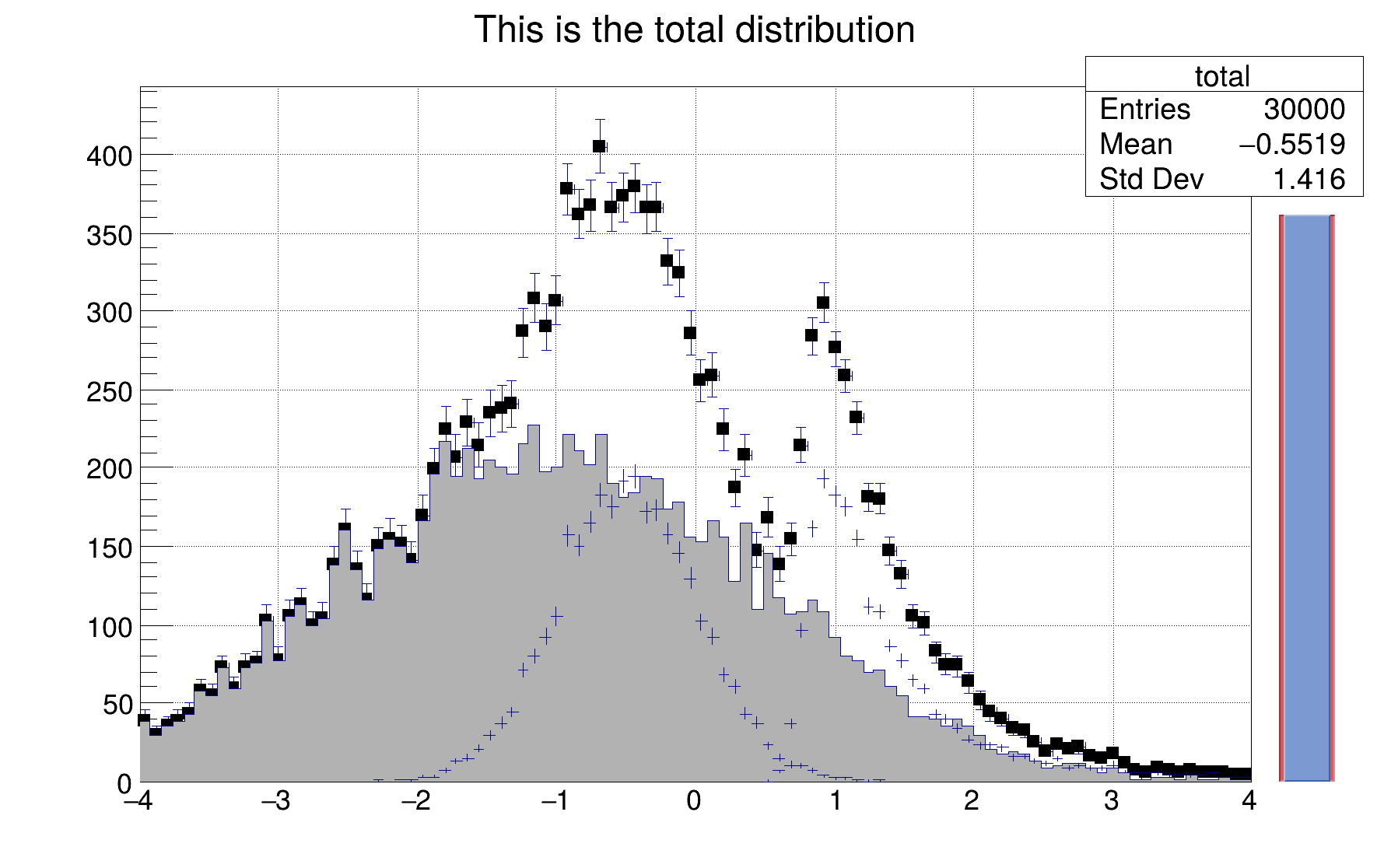

Histograms filled and drawn in a loop.
Simple example illustrating how to use the C++ interpreter to fill histograms in a loop and show the graphics results

{
auto total =
new TH1F(
"total",
"This is the total distribution",100,-4,4);
auto main =
new TH1F(
"main",
"Main contributor",100,-4,4);
auto s1 =
new TH1F(
"s1",
"This is the first signal",100,-4,4);
auto s2 =
new TH1F(
"s2",
"This is the second signal",100,-4,4);
total->SetMarkerStyle(21);
total->SetMarkerSize(0.7);
for (
Int_t i=0; i<10000; i++) {
"test",4.2,0,4.6,
total->GetMaximum(),38);
}
}
}
}
R__EXTERN TBenchmark * gBenchmark
ROOT::Detail::TRangeCast< T, true > TRangeDynCast
TRangeDynCast is an adapter class that allows the typed iteration through a TCollection.
static unsigned int total
R__EXTERN TRandom * gRandom
virtual void Start(const char *name)
Starts Benchmark with the specified name.
virtual void Show(const char *name)
Stops Benchmark name and Prints results.
1-D histogram with a float per channel (see TH1 documentation)
virtual Double_t Gaus(Double_t mean=0, Double_t sigma=1)
Samples a random number from the standard Normal (Gaussian) Distribution with the given mean and sigm...
virtual void SetSeed(ULong_t seed=0)
Set the random generator seed.
virtual Double_t Landau(Double_t mean=0, Double_t sigma=1)
Generate a random number following a Landau distribution with location parameter mu and scale paramet...
A specialized TPad including a TSliderBox object.
- Author
- Rene Brun
Definition in file hsum.C.


